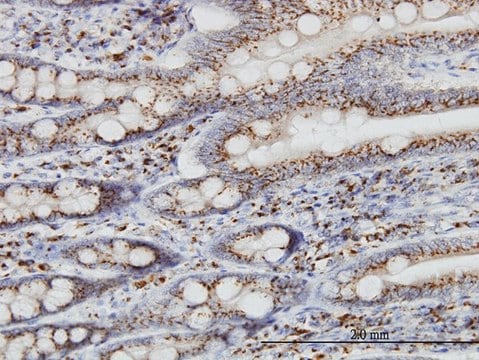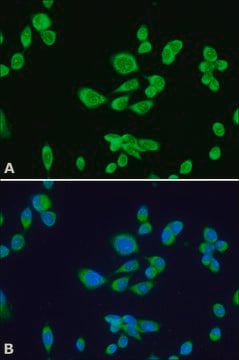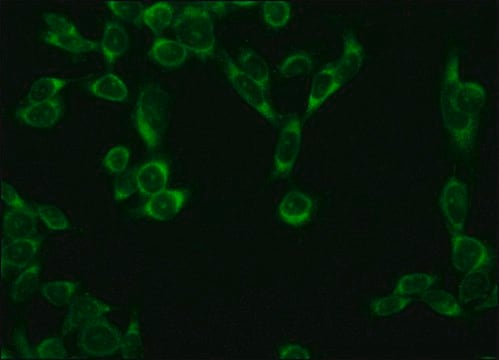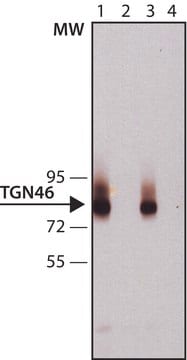Kluczowe dokumenty
T9826
Anti-TGN38 antibody produced in rabbit
~1 mg/mL, affinity isolated antibody, buffered aqueous solution
Synonim(y):
Anti-MGC108592, Anti-TGOLN2, Anti-TTGN1, Anti-Trans-golgi network protein 2
Wybierz wielkość
1778,00 zł
Cena katalogowa2540,00 złZaoszczędź 30%Wybierz wielkość
About This Item
1778,00 zł
Cena katalogowa2540,00 złZaoszczędź 30%Polecane produkty
pochodzenie biologiczne
rabbit
białko sprzężone
unconjugated
forma przeciwciała
affinity isolated antibody
rodzaj przeciwciała
primary antibodies
klon
polyclonal
Formularz
buffered aqueous solution
masa cząsteczkowa
antigen ~38 kDa
reaktywność gatunkowa
rat
stężenie
~1 mg/mL
metody
indirect immunofluorescence: 5-10 μg/mL using rat NRK cells
Warunki transportu
dry ice
temp. przechowywania
−20°C
docelowa modyfikacja potranslacyjna
unmodified
informacje o genach
rat ... Tgoln1(192152)
Opis ogólny
Specyficzność
Immunogen
Zastosowanie
- immunofluorescence
- western blotting
Działania biochem./fizjol.
Opis wartości docelowych
Postać fizyczna
Przechowywanie i stabilność
Oświadczenie o zrzeczeniu się odpowiedzialności
Nie możesz znaleźć właściwego produktu?
Wypróbuj nasz Narzędzie selektora produktów.
produkt powiązany
Kod klasy składowania
10 - Combustible liquids
Klasa zagrożenia wodnego (WGK)
WGK 3
Temperatura zapłonu (°F)
Not applicable
Temperatura zapłonu (°C)
Not applicable
Środki ochrony indywidualnej
Eyeshields, Gloves, multi-purpose combination respirator cartridge (US)
Wybierz jedną z najnowszych wersji:
Certyfikaty analizy (CoA)
Nie widzisz odpowiedniej wersji?
Jeśli potrzebujesz konkretnej wersji, możesz wyszukać konkretny certyfikat według numeru partii lub serii.
Masz już ten produkt?
Dokumenty związane z niedawno zakupionymi produktami zostały zamieszczone w Bibliotece dokumentów.
Active Filters
Nasz zespół naukowców ma doświadczenie we wszystkich obszarach badań, w tym w naukach przyrodniczych, materiałoznawstwie, syntezie chemicznej, chromatografii, analityce i wielu innych dziedzinach.
Skontaktuj się z zespołem ds. pomocy technicznej








